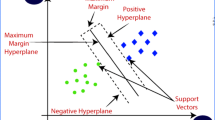Abstract
This paper presents a spatial steganography scheme with high steganography capacity for medical images. In the proposed scheme, four least significant bits of the cover image are used to hide secret information and a logistic mapping is employed to scramble cover image before embedding operation. In order to achieve minor degradation to cover medical image, the ROI region is excluded manually before embedding operation and an adaptive embedding strategy is employed. Experiment results show that, compared with Fan L’s hiding scheme, our proposed scheme can improve the steganography capacity by 2.25 times, and the maximum peak signal to noise ratio loss and average loss are only 0.78 and 0.45, respectively. In other words, our scheme does not only improve the capacity of the existing method but also can maintain an acceptable quality of the cover image.









Similar content being viewed by others
References
G. J. Kuperman, et al., HELP: a dynamic hospital information system: Springer Science & Business Media, 2013.
Arenson, R. (1992). Picture archiving and communication systems. Western Journal of Medicine, 156, 298.
N. E. M. Association and A. C. o. Radiology, Digital imaging and communications in medicine (DICOM): National Electrical Manufacturers Association, 1998.
Mantas, J. (2001). Electronic health record. Studies in Health Technology and Informatics, 65, 250–257.
Mohapatra, C., & Pandey, M. (2015). A Review on current Methods and application of Digital image Steganography,. International Journal of Multidisciplinary Approach & Studies, 2.
Jeya, I. J. S., & Suganthi, J. (2015). RONI Based Secured and Authenticated Indexing of Lung CT Images,. Computational and Mathematical Methods in Medicine, 2015.
X. Luo, et al., “A lossless data embedding scheme for medical images in application of e-diagnosis,” in Engineering in Medicine and Biology Society, 2003. Proceedings of the 25th Annual International Conference of the IEEE, 2003, pp. 852–855.
V. Sedighi, et al., “Content-adaptive pentary steganography using the multivariate generalized Gaussian cover model,” in SPIE/IS & T Electronic Imaging, 2015, pp. 94090H-94090H-13.
Filler, T., et al. (2011). Minimizing additive distortion in steganography using syndrome-trellis codes. IEEE Transactions on Information Forensics and Security, 6, 920–935.
Wolfgang, R. B., et al. (1999). Perceptual watermarks for digital images and video. Proceedings of the IEEE, 87, 1108–1126.
Zhang, X., & Wang, S. (2006). “Efficient steganographic embedding by exploiting modification direction,” Communications Letters. IEEE, 10, 781–783.
Wu, H.-C., et al. (2005). “Image steganographic scheme based on pixel-value differencing and LSB replacement methods,” IEE Proceedings-Vision. Image and Signal Processing, 152, 611–615.
Wang, C.-M., et al. (2008). A high quality steganographic method with pixel-value differencing and modulus function. Journal of Systems and Software, 81, 150–158.
Tseng, Y.-C., et al. (2002). “A secure data hiding scheme for binary images,” Communications. IEEE Transactions on, 50, 1227–1231.
Fan, L., et al. (2013). Improving the embedding efficiency of weight matrix-based steganography for grayscale images. Computers and Electrical Engineering, 39, 873–881.
Chandramouli, R., & Memon, N. D. (2003). Steganography capacity: A steganalysis perspective,. In Electronic Imaging, 2003, 173–177.
Wang, Y., & Moulin, P. (2008). “Perfectly secure steganography: capacity, error exponents, and code constructions,” Information Theory. IEEE Transactions on, 54, 2706–2722.
N. Cvejic and T. Seppanen, “Increasing the capacity of LSB-based audio steganography,” in Multimedia Signal Processing, 2002 I.E. Workshop on, 2002, pp. 336–338.
Wang, R.-Z., et al. (2000). Hiding data in images by optimal moderately-significant-bit replacement. Electronics Letters, 36, 2069–2070.
Chang, C.-C., et al. (2003). Finding optimal least-significant-bit substitution in image hiding by dynamic programming strategy. Pattern Recognition, 36, 1583–1595.
Li, T.-Y., & Yorke, J. A. (1975). Period three implies chaos. American Mathematical Monthly, 985–992.
D. W. Hosmer Jr and S. Lemeshow, Applied logistic regression: John Wiley & Sons, 2004.
Petitcolas, F. A. (2000). Watermarking schemes evaluation. Signal Processing Magazine, IEEE, 17, 58–64.
A. G. Weber, “The USC-SIPI Image Database: Version 5, Original release: October 1997, Signal and Image Processing Institute, University of Southern California, Department of Electrical Engineering,” ed.
Al-Dmour, H., & Al-Ani, A. (2016). Quality optimized medical image information hiding algorithm that employs edge detection and data coding. Computer Methods and Programs in Biomedicine, 127, 24–43.
Fridrich, J., et al. (2001). Reliable detection of LSB steganography in color and grayscale images. In Proceedings of the 2001 workshop on Multimedia and security: new challenges, 27–30.
Voloshynovskiy, S. V., et al. (2000). Generalized watermarking attack based on watermark estimation and perceptual remodulation,” in Electronic Imaging, 358–370.
Acknowledgments
This work is supported by the National Natural Science Foundation of China (Nos. 61374015, 61202258 and 61602107), and the Central Universities Fundamental Research Funds of China under Grant no. N120317003, and Liaoning Provincial Department of Education’s Scientific and technological research award under Grant no. L20150167, and scholarship under State Scholarship Fund File no. 201606085034.
Author information
Authors and Affiliations
Corresponding author
Rights and permissions
About this article
Cite this article
Wang, D., Chen, D., Ma, B. et al. A High Capacity Spatial Domain Data Hiding Scheme for Medical Images. J Sign Process Syst 87, 215–227 (2017). https://doi.org/10.1007/s11265-016-1169-7
Received:
Revised:
Accepted:
Published:
Issue Date:
DOI: https://doi.org/10.1007/s11265-016-1169-7




